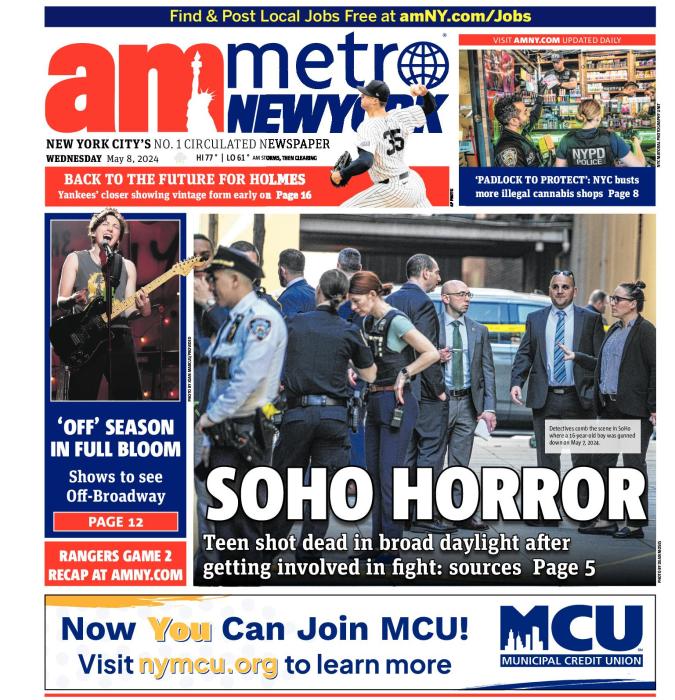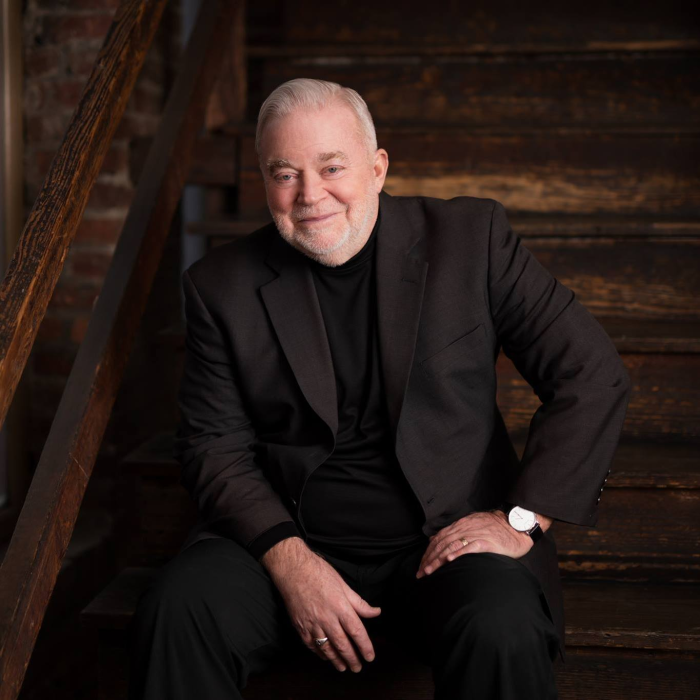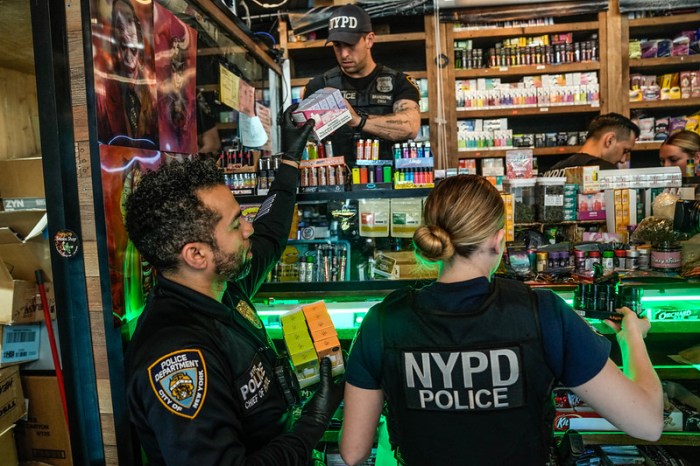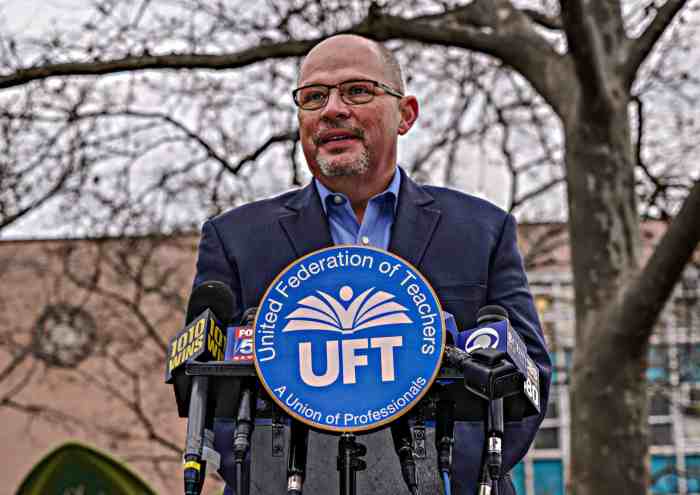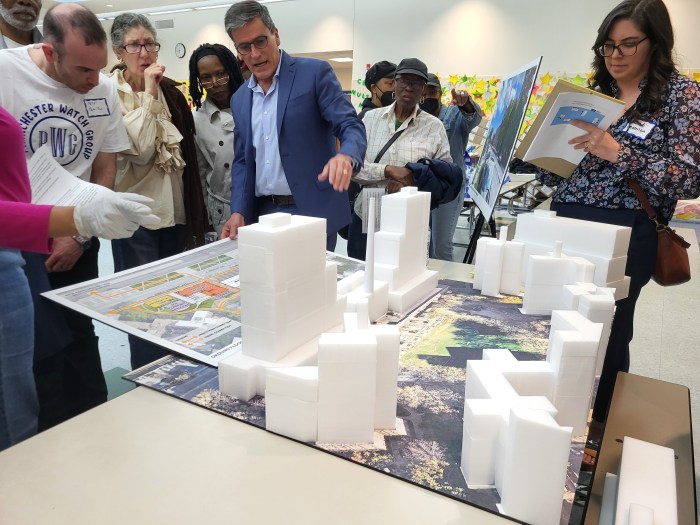BY SCOTT STIFFLER | With a June 6 “No, Unless” verdict from Community Board 4 (CB4) and a July 19 declaration of “Conditional Disapproval” from Manhattan Borough President Scott Stringer, Jamestown Properties’ bid to vertically expand Chelsea Market is now
halfway through the Uniform Land Use Review Procedure (ULURP) process.
The CB4 decision (reached via a 26-14 vote) and Stringer’s detailed analysis of the ULURP application both came with recommendations for significant design changes and a firm philosophical opposition to the project.
Opinions differ, however, as to what extent the current design will change, and what benefits the surrounding community will see. In addition to a 19 million dollar contribution to the High Line Improvement fund and additional amenities for the elevated public park, both CB4 and Stringer have made known its desire for Jamestown to establish a fund for affordable housing, equal to 27 percent of the project’s floor area increase.
If the ULURP application is approved in its current form, Jamestown will be allowed to add 240,000 square feet of office space alongside the 10th Avenue side and 90,000 square feet of hotel space at Ninth Avenue and West 16th Street. The applicant has repeatedly expressed its willingness to scrap the hotel in favor of additional office space.
Plans to alter the block-long, 18-building complex — first assembled in 1898 then expanded to accommodate the growing needs of the National Biscuit Company — are now in the hands of the City Planning Commission (CPC).
The CPC has just under 60 days to weigh in. As was the case with CB4 and the borough president’s office, the CPC will issue a nonbinding but influential recommendation before the project is either approved or rejected by the City Council. Subject only to mayoral override (which Bloomberg has never invoked), even the most steadfast opponents concedes the likelihood of an end game scenario in which the City Council will permit some form of construction to proceed.
SAVE CHELSEA REMAINS ‘100%’ STEADFAST
“It’s a hard thing to consider,” said Justin Hoy in a July 23 phone interview. The Save Chelsea co-president — whose group has been uncompromising in their refusal to endorse to any construction atop the iconic building — recalled, “There have been 28 [ULURP] projects proposed that the City Council has had the yay or nay over, and 28 have been approved. That’s Wild West development.”
Asked about any shift in strategy given the likelihood of ULURP approval, Hoy speculated, “We’ll have to decide what to do then…but our vote has been consistently, among ourselves, to oppose this.”
In a July 23 message sent to those on its email list, Save Chelsea urged likeminded opponents of the expansion to attend the CPC’s public hearing on Chelsea Market (set for 10am on July 25). “Show our community’s unanimous rejection of this plan!” the message implored, noting that “We at Save Chelsea and our allied groups are still 100% opposed to this upzoning and expansion…This developer wants the zoning changed in order to make a financial windfall, and if they get their way, we all know more developers will soon follow.”
Bemoaning the fact that the CPC public hearing was scheduled on the heels of Stringer’s decision, Hoy asserted, “That’s something that is wrong with the ULURP process. It comes too quickly. But our primary focus now is going to be at the level of [City Council] Speaker Quinn’s office — right after the CPC hearing. We’ve had a lot of preliminary and in-depth discussions with her staff, but we haven’t yet met with the speaker. That wouldn’t be appropriate, because it’s not before her yet.”
Asked to assess the borough president’s 17-page recommendation, Hoy praised it as “a very detailed and insightful review of what is proposed. We would have preferred to see him oppose this 100 percent, just as we do. But we believe that the research and conclusion in his recommendation really tells the story of why this should not be built. What the zoning along 10th Avenue was intended to do was provide light and air and unrestricted views from the High Line. Stringer points this out in very great detail.”
CONTEMPLATING DESIGN CHANGES
Vertically expanding the existing Chelsea Market structure would require exemptions from zoning constraints established by the Special West Chelsea District (SWCD). Adopted in 2005 by the City Council (with input from CB4 and the CPC), the SWCD was designed to promote residential and commercial development while protecting light and air integrity along the High Line.
Concern for the aesthetic integrity of the High Line pedestrian experience loomed large in Stringer’s list of recommendations — which envisions an even more radical design change than what was proposed by CB4. A July 19 press release from Stringer’s office advocated “shifting the proposed addition from over 10th Avenue to over 9th Avenue and lowering the addition’s base height to 170 feet and capping its height at 184 feet in total. This recommendation respects the original intent of the Special District to shift density away from the High Line.”
Allowing the current proposal to move forward, Stringer noted, would “be the first time the special district would move density to and directly over the High Line instead of trying to move it away.
“You don’t build a park and then undermine it,” Stringer cautioned, “but that’s what this proposal does. It’s precisely the wrong approach.”
In a July 23 phone interview, Stringer noted that his specific recommendations on the matter of Chelsea Market expansion also speak to the future. “Development,” he asserted, “must coexist, not overwhelm a neighborhood. People come [to Chelsea] not just for unique economic opportunities, but unique living opportunities.”
While he conceded that “the skylines in the city change, and they must,” Stringer added, “The expansion proposal, in its current form, risks destroying Chelsea’s character. We have to recognize that Chelsea is a unique community whose residents have built it with sweat equity. We need to have balance. Part of what I’ve tried to do with this large development project is to shape a road map to getting something accomplished, and I think it offers many practical ways to accommodate development and protect the community.”
Chelsea Now reached out to Jamestown, requesting comment regarding whether they are amenable to any specific proposals put forth by the borough president, and how this might impact Jamestown’s impending review by the CPC and the City Council. In a July 24 email, a spokesperson for Jamestown Properties replied by noting, “The city’s land use review process allows for input from various stakeholders — including recommendations from the Community Board and Borough President. Jamestown will continue to make the case for the job- and revenue-generating expansion of Chelsea Market which will provide much-needed space for tech companies and much-needed funds for the High Line. As we move through the process toward what we hope will be a favorable conclusion, we will continue to explore ways to improve the plan based on ideas from area residents and other important stakeholders.”
In the July 19 press release detailing highlights of his recommendation, Stringer added, “I strongly encourage Jamestown to continue working with the City Planning Commission and the Council to reexamine their development plans and find a solution that can work for all stakeholders. The plan in its current form is wrong for Chelsea and wrong for New York City.”
Stringer expanded on this statement in his phone interview with Chelsea Now, noting that “There has to be more work and real negotiation” between the applicant and the remaining two players in the ULURP process, and asserting that his office would have a presence moving forward. “We’re certainly going to have discussions with Jamestown and the City Planning Commission and the Speaker’s office,” vowed Stringer, “to give them our thinking on the issue. Jamestown was not willing to have a discussion about density and height during our time period. Perhaps down the road, they’ll have that discussion with the City Council.”
